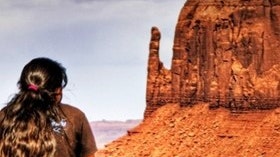Homepage
•
Learning Library
•
Blog
•
Personalized learning, the Navajo way
Expand breadcrumbs
Expand breadcrumbs
- Learning Library
- Blog
- Personalized learning, the Navajo way
- Homepage
- •
- Learning Library
- •
- Blog
- •
- Personalized learning, the Navajo way
Personalized learning, the Navajo way
By Mark Sorensen
August 10, 2017








